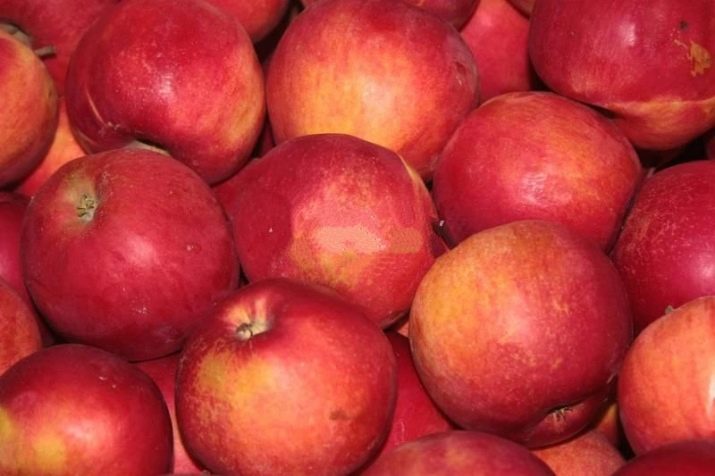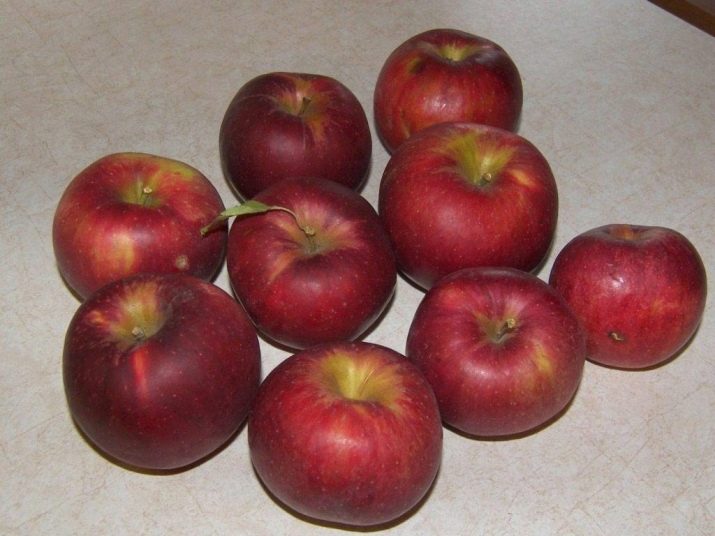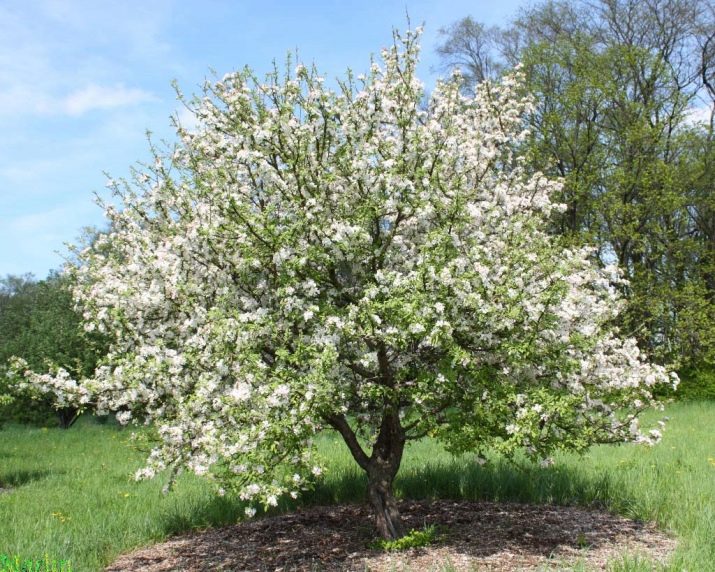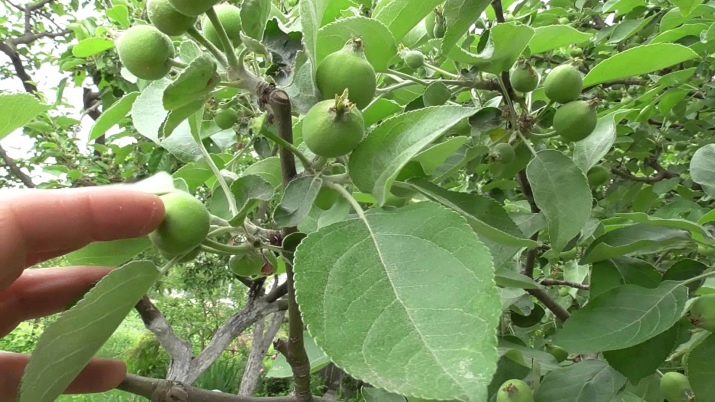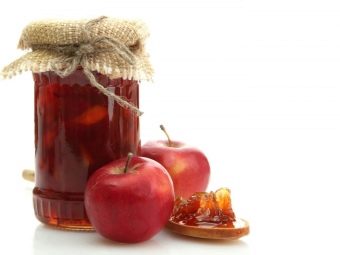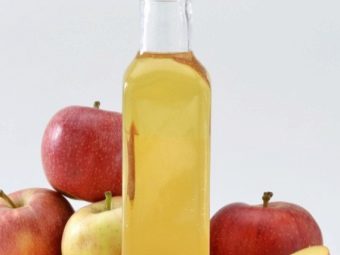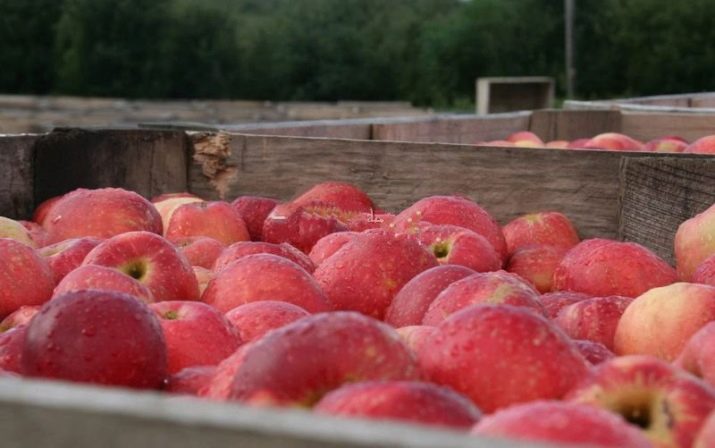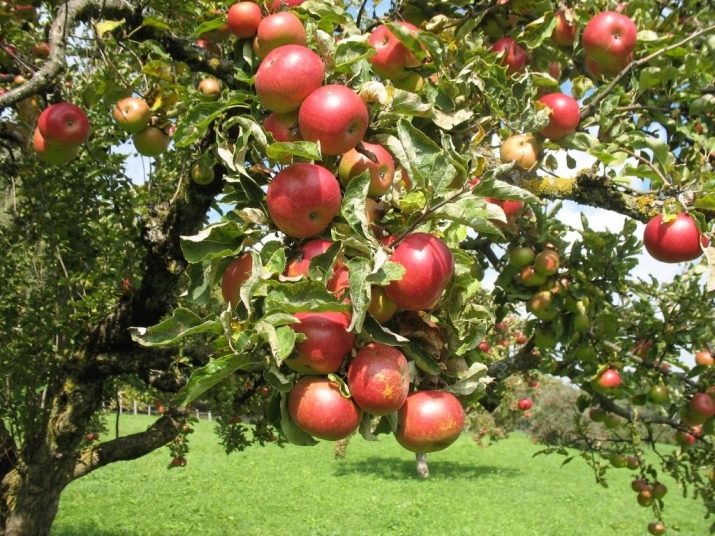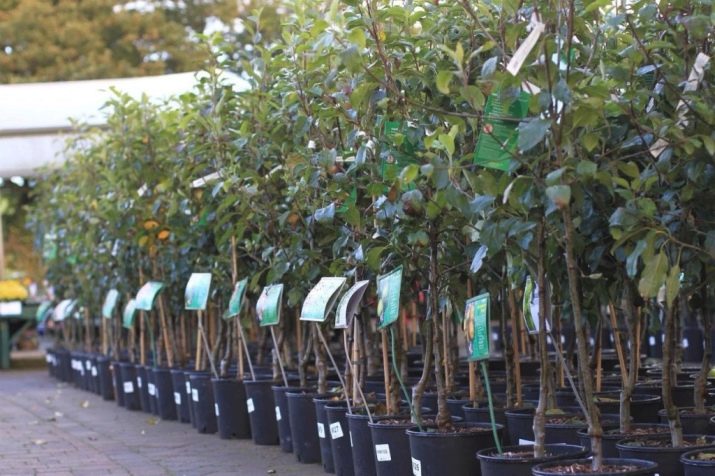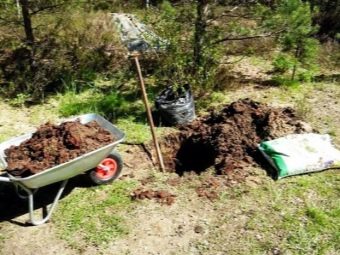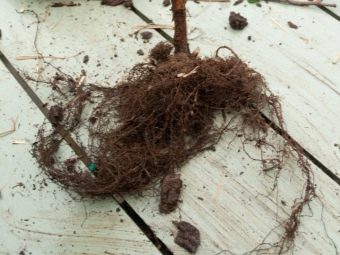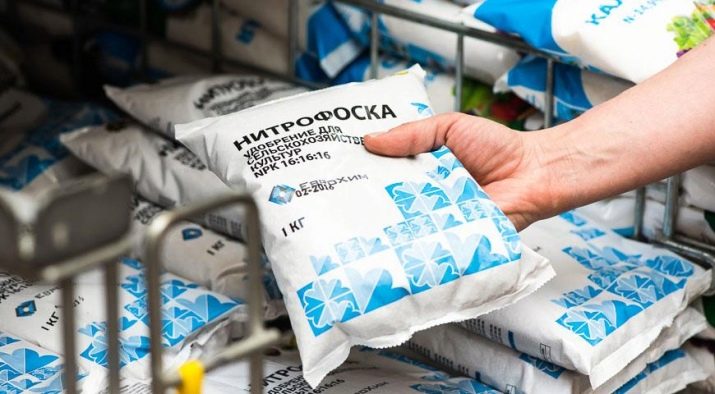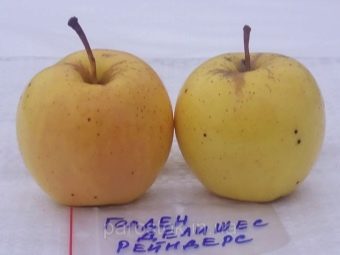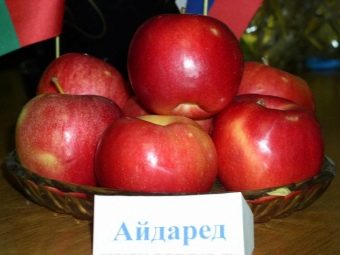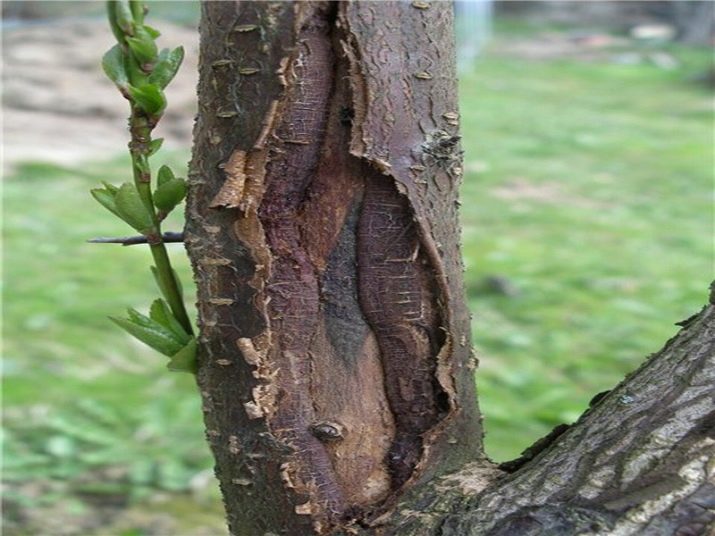Apple tree "Jonathan": description of the variety and agricultural technology
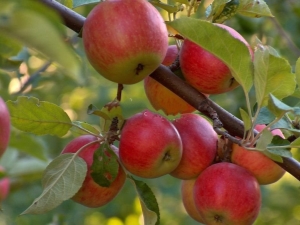
Today, apple trees grow on the site of each Russian gardener and in many yards of private cottages. Most of their owners do not even know the names of varieties, not to mention the history of their origin.
In this article, we consider a variety such as "Jonathan", its advantages, disadvantages, as well as growing technology.
A bit of history
The apple is so dear to us that it is difficult to imagine its arrival to us from other continents. However, this is so, many modern varieties saw the light on the territory of North America.
These include, for example, the variety Jonathan, which we will discuss in this article. Unfortunately, his true story is unknown. There are only a few facts. Believe it or not, decide for yourself.
This species appeared in the second half of the XIX century, approximately in 1862. It happened in the state of New York. On the farm of a certain Philip Rick, the apple trees “Espopus Spitzenberg” (also known as “Aesop Spitzenburg”) grew, on the basis of which the breeder Rachel Hingly bred a new variety. According to rumors, she named him after her husband Jonathan.
A few years later, the species began to spread throughout the world. He reached the USSR in the middle of the 20th century and was almost immediately included in the state register. "Jonathan" was grown in the territories of the North Caucasus and Ukraine. The popularity of imported varieties from our gardeners began to grow in the 1980s.
By the way, residents of various regions of the Soviet Union came up with an apple of their names - “Oslamoskoe”, “Winter horoshavka”, “Winter red”.
Description and characteristics
Appearance in Jonathan apple trees is somewhat peculiar. Its branches form the shape of a ball, only slightly distorted. However, during flowering this is almost imperceptible. The trees reach an average height. The bark is distinguished by a brown color with a greenish tint.
Experienced gardeners are able to determine the varietal affiliation of this apple tree by its leaves. The fact is that on the surface they have a silver plaque. The shape of the leaves - oval, sizes - medium.
In terms of flowering variety is difficult to attribute to any particular type. It begins in May, slightly after the average period.
Apples also have an interesting appearance, namely: the shape of a flattened ball. Ripened fruits have a dark red color. The weight of one of them can reach 150 grams.
Fresh apples just picked from the tree are filled with white and green flesh. But for a short time, it acquires a light cream color, but does not lose its taste and wonderful aroma. The level of sugar in the composition of apples varies from 10 to 11%, and in apples growing in the southern regions of the country - more than 11%. Fruiting, as a rule, begins after a different time, from 3 to 5 years after planting. However, in warm regions, it can begin as early as the second year.
Advantages and disadvantages
Many gardeners, both experienced and amateur, put Jonathan in first place in their favorite varieties. However, this does not mean that this view is perfect. It has almost equal number of pros and cons.
The first is the already mentioned taste and aroma. Together with juiciness, these qualities make the "Jonathan" a delicious delicacy. Gardeners say that it is pleasant to eat apples raw, however, if you wish, you can make a lot of delicious and healthy desserts from them.
- First, from apples you can make a great filling for pies and other pastries.
- Secondly, it is, of course, various jams and jams.
- Thirdly, juices and wines that have a special unsurpassed smell.
- Fourth, experienced chefs make an excellent sauce for meat dishes from juicy apples.
But enough about cooking, let's move on to the rest of the benefits. Despite the average late flowering period, the apple trees start fruiting early. At the same time, Jonathan boasts high yield volumes. With proper care, they can reach 400 kilograms from a single tree. The apples themselves are not very big, but they are many. By the way, the crop record was set at the Sad-Giant state farm, when about 490 kilograms were collected from one apple tree.
Another plus grade - long shelf life.But it can be ensured only by observing a few rules, which we will talk about later.
We now turn to the disadvantages. Jonathan is demanding care. To get a large and high-quality crop, you need to make a lot of effort during the ripening period.
The main disadvantage of the variety is low resistance to cold. Jonathan suffers serious damage already at -15 ° C. Because of this, apple trees are able to develop properly only in warm regions of Russia, not suffering from harsh winters.
However, experienced gardeners from the middle lane assure that with proper preparation, the trees are able to withstand even thirty degrees of frost. But in this case, one should not expect a big harvest from the apple trees. In addition, he will need more time for ripening.
Planting and care
Next, we will talk about the proper planting of apple trees. First of all, it is necessary to decide for yourself at what period this should be done, in spring or autumn. There is no one right opinion.
Some gardeners claim that it is better to do this at the end of April, others advise the autumn months. We will support the second option, which is more preferable for the Central region of Russia. Due to the late planting, apples during the winter will be able to better adapt to local climatic conditions. But in this case, you need to take care of wintering seedlings. The slightest mistake or unforeseen circumstances can destroy all young apple trees before the beginning of spring.
Buy seedlings in specialized stores or from trusted suppliers. There is a risk of running into diseased non-viable apple trees or even less quality clones. The most suitable growth of a sapling is 80 centimeters.
Before proceeding directly to the landing, you need to prepare a place. Choose the part of the site that is well lit by the sun from all sides.
"Jonathan" loves the light, but the scorching rays can harm the young seedling. Therefore, on hot days it should be covered with a large piece of cloth or branches.
Also at the site of landing there should be no drafts and, preferably, a cold wind. The best soil options are loamy or sandy. But it should not be excessively wet, otherwise the apple trees may suffer from powdery mildew, to which Jonathan is very vulnerable.
To reduce the level of threat from pests and diseases, carry out preplant prophylactic treatment.
Holes for planting should be dug for several days, and at the same time fertilize them with mineral or organic substances.
If the roots of the seedling are too long, cut them, and if they are too dry, put them in a container with water for two days.
When planting should take into account the distance between rows and holes. In both cases, it must be at least four meters. The best option is six meters. You may think that the distance is too large. However, apple trees will need a space in which they can properly develop.
Pay attention to so that the root neck is at the level of 10 centimeters above the ground. After planting, do not forget to stick a peg next to which you will tie up the sapling. And immediately pour plenty of apple water.
Now a little more about the care. Apple trees should be regularly fed with phosphorus and potassium based mineral fertilizers. If the earth is depleted, it will have to be done more often. Otherwise, due to the poverty of the soil, the crop may noticeably shrink.
Do not forget about watering. In dry months, you need to increase their frequency. And after each useful to loosen the soil and remove weeds.
An important part of care is pruning. The first of them is recommended for the second year after landing. She is formative. Sanitary pruning is done every spring in order to get rid of weak and dry branches. For adult grown apple trees, rejuvenating pruning is necessary.
Jonathan is often called a self-pollinated variety, but in order to improve the result, it is recommended to plant other species nearby.To do this, suitable "Golden Delicious", "Mac" and "Idared."
Combating Ailments
As we said earlier, powdery mildew is the worst enemy of Jonathan. This is a fungus whose spores are rapidly developing in conditions of high humidity. Recognize the disease can be on a white patina on the leaves, for which it received its name. Bringing this infection is quite difficult, and she, in turn, is able to destroy the entire crop.
In addition to powdery mildew, apple trees can be threatened with bacterial cancer and scab, before which this variety is a little more resistant. In order to combat them, it is recommended to carry out preventive spraying with fungicides at least three times during the summer.
It is desirable to change the applied means every year, because insects and microbes quickly get used to them.
If you still notice signs of illness, action is urgently needed. The treatment is also carried out by spraying. For these purposes, you can use manganese solutions, a mixture of soap and soda ash or copper oxychloride. The procedure should be carried out once every three days, until the disease completely subsides.
At low temperatures, apple trees suffer from freezing of wood, on which scabs and wood rust are formed. To prevent this from happening, warm the tree trunks with coniferous branches or reeds.
Storage
Harvest can be started in late September or early October. Pay attention to weather conditions.
Harvested apples can be stored until next spring. You can keep them just in the fridge. The main thing is to observe the correct temperature, which should be + 2 ° С, + 3 ° С. With increased heat, dark, bitter-tainted spots will appear on the apples.
Also, when collecting and planting, handle the fruits carefully, avoid bruises and damage.
Jonathan apples were popular in the second half of the last century and remain popular to this day, as evidenced by numerous rave reviews. You will have to give this variety a considerable part of your attention, but it, in turn, will adequately repay you with an excellent harvest.
Review the fruits of "Jonathan", see the following video.

